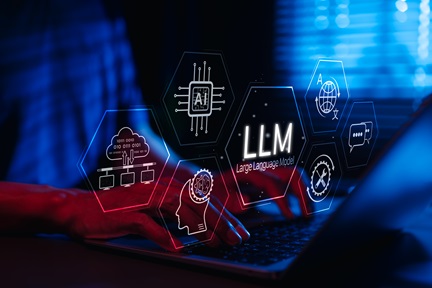Supply, disrupted: How Singapore should prepare for the next crisis
One year into the Covid-19 pandemic, mask shortages feel like a distant memory. Today, one can find disposable and reusable masks in most local stores, in a variety of sizes and styles. But the threat of a global mask shortage was very real when factories in China - responsible for half of the world's surgical mask supply - began to shut down in early 2020. The potential supply crunch factored into the Singapore government's decision to discourage mask-wearing among healthy people, in order to conserve the protective gear for healthcare workers. Given what we now know about how the Covid-19 virus spreads, this move could have easily proved disastrous. But Singapore's luck held, and thanks to government efforts to secure supplies and private companies that stepped up to manufacture masks locally, we can breathe easier now.
However, the next time a crisis threatens global supply chains, Singapore might not be so lucky. Despite our limited land, resources and manpower, we must find ways to increase our self-reliance and resilience so we are not caught unprepared again.
Onshoring production
Amid the widespread disruption from the pandemic, countries like the United States and Japan have begun to review the security of their supply chains. Japan is already paying companies to shift manufacturing operations out of China and back into Japan or into South-east Asia.
If only the solution were as simple for Singapore, which has no choice but to import nearly everything it needs, including 90 per cent of its food. Here, localised manufacturing of low-value items is often a temporary measure reserved only for the most critical of needs.
For example, masks have been a necessity in this crisis, prompting firms in industries as varied as gaming, printing and robotics to work overtime to set up surgical mask production operations. This reduced the Republic's dependence on foreign suppliers, even though the materials still had to be obtained from overseas.
Things improved in January this year, when Singapore Technologies (ST) Engineering announced that it could now produce melt-blown polypropylene fabric, used as the key filtration layer in surgical masks.
With this capability, Singapore's local supply of the critical material will be sufficient to produce surgical masks for the healthcare workforce and public needs, Minister for Trade and Industry Chan Chun Sing said of the announcement.
ST Engineering's melt-blown fabric and mask manufacturing capabilities will support continued research and development (R&D) in respiratory protection, as well as comfortably meet local needs now and in a future health crisis, says Gareth Tang, the firm's senior vice-president and head of robotics and autonomous solutions and urban environment solutions.
While the other firms may dismantle their mask-production lines after the pandemic subsides, these capabilities will still come in handy in future crises if they are preserved in a "smart" way, says S Viswanathan, professor of operations management at Nanyang Business School, Nanyang Technological University (NTU). "While localising production entirely for a low-value added item during all times might not be optimal, we certainly want to increase our resilience... and build capabilities in case a crisis hits us again," he says.
For example, Singapore's investments into smart manufacturing capabilities such as Industry 4.0 and additive manufacturing could be leveraged to develop flexible manufacturing capacity or capabilities that can be pivoted quickly to produce essential products.
In the event that the next crisis is another pandemic, vaccine manufacturing will be a key localised capability. The Ministry of Trade and Industry is in discussions with global pharmaceutical companies to manufacture vaccines in Singapore, and is also investing in R&D for diagnostics, vaccines and therapeutics.
In October, Thermo Fisher Scientific announced plans for a US$130 million sterile fill-and-finish facility here that will be operational in 2022. Earlier this month, Sanofi said it will invest 400 million euros (S$639 million) over five years in a vaccine-production centre in Singapore.
An eye on supply
Health threats aside, there are numerous other incidents that could disrupt supply chains. Just take the grounding of the megaship Ever Given in the Suez Canal, which stalled global shipping flows for nearly a week in March.
Anticipating such incidents and acting quickly is critical, but many companies do not keep as close an eye on their supply chains as they ought, says Paul Houston, a supply chain expert and global head of risk management at Allied World.
He cites a well-known case study in which Nokia's awareness of its supply chain enabled it to start seeking alternative solutions and sources soon after it learned of a fire at a key chip supplier's plant.
Meanwhile, its rival Ericsson, who used the same supplier, did not react until the supplier revealed the full severity of the incident's impact on supply, by which time most of the alternative sources had been snapped up by Nokia.
"Most companies have no idea what's in their supply chain," explains Mr Houston. "They don't know what company is picking the goods up, because it will be subcontracted out... or what are the locations (that the goods pass through). Is one of them in Vietnam, or Iceland? What are the risk factors associated with each? What I personally think companies should be doing a lot more of, is getting that visibility of their supply chain and securing it."
The uncertainty caused by the Covid-19 pandemic pushed more companies to hold more stock and create additional buffers in their supply chains, in a shift away from a just-in-time (JIT) to a just-in-case philosophy.
For instance, Beacons Pharmaceuticals, Singapore's largest manufacturer of generic pharmaceuticals, increased its buffer of supplies for production to one year, from four to six months previously. It also expanded its repertoire of sources from just China and India to include suppliers in South Korea, Taiwan and Europe.
While this provides better resilience against disruptions, the trade-off in profitability means that companies may revert to JIT manufacturing as soon as it becomes feasible. Mr Houston hopes that this will not be the case, noting: "A super tight and stretched logistics chain that is hyper-efficient with no buffers at all - as soon as something along the critical path breaks, there's a huge delay and knock-on effects."
Companies should continue using their JIT demand models, but instead of maintaining minimum levels of inventory as they used to, they should add in a buffer to keep the overall supply chain resilient, Mr Houston advises.
Geoffrey Chua, an associate professor in the Division of Information Technology and Operations Management at NTU's Nanyang Business School, believes that companies can strike a balance between profitability and resilience with the help of technologies and applications that protect against disruption while increasing value creation. "One example is additive manufacturing or 3D printing which can be used to meet demand during disruptions, but also for prototyping, bridging and spare parts during peacetime," he says.
Another technology that can both value-add and increase resilience is augmented reality (AR). Semiconductor test and handling solutions manufacturer AEM Holdings had been evaluating AR before the pandemic, and accelerated its use of the technology for remote training when travel stalled, says chief executive Chandran Nair.
The experiential nature of AR made it possible for engineers working for AEM's overseas clients to receive high-quality training and real experience needed to deploy and maintain complex tools, without needing to physically attend training in Singapore.
Says Mr Nair: "One of the silver linings of the pandemic is that some of these technologies and methods will continue to be used even when we are in post-pandemic mode, because they are cost-effective and more importantly, environmentally friendly because you don't need to fly."
Last but not least, companies should note the various ways governments reacted to the pandemic, and include them in scenario planning for future crises. Whether a country shuts all borders immediately, works with other countries to establish green lanes or allows work in certain sectors to go on, knowing to expect in each scenario will help firms make more logical business decisions, says Mr Houston.
To ensure its actions were tailored to the situation in different countries, analytical instrument manufacturer Agilent Technologies formed global teams to address supply chain demands in each market. Chow Woai Sheng, vice-president/general manager for global instrument manufacturing and Singapore country general manager, was one of many Agilent leaders who worked with government officials and local suppliers to secure special approvals and needed supplies.
Mr Chow recalls an instance where some of his global colleagues leveraged multiple channels to negotiate with a key supplier of a specific type of engineering foam needed for Agilent's qPCR instrument, which was in high demand for Covid-19 testing. The 70-year-old business owner wanted to stop his production operations fully, but the Agilent leaders successfully convinced him to keep a small operation running just to produce the foam.
Feeding a nation
Perhaps the most crucial supply to protect in any crisis is that of food - and the public's trust in its security.
Food security expert Paul Teng, who is an adjunct senior fellow at NTU's S Rajaratnam School of International Studies, notes that Singapore benefited from its good relationships with other countries and good logistics of its supply chains in keeping food supplies intact during this crisis.
The government also managed to assure consumers that there would be no supply shortages, and that the empty shelves in supermarkets were only due to temporary delays in restocking.
"Generally, there was no widespread panic or hoarding which could have exacerbated the situation," Prof Teng says.
However, that is not to say that Singapore's food supply was not under strain at any point. As countries went into lockdowns or banned certain exports in order to cater to domestic needs, the Singapore Food Agency (SFA) had to tap its source network in more than 170 countries and regions to minimise disruptions from regular suppliers.
Similarly, supermarket operator Prime Group relied on a wide network of sources to keep its supermarkets stocked. It also had a buffer for seafood supply in the form of its own sea farm, which currently produces 600 metric tonnes of fish per year for its supermarket chain, local wholesale centres, markets, food chain stores and wet market fish stalls.
Chief executive Tan Yong Shao says the group intends to increase its aquaculture production to 1,000 metric tonnes per year by 2022.
Currently, local food production like Prime Group's aquaculture farm accounts for about 10 per cent of Singapore's nutritional needs, and the food items with potential for increased production are fish, eggs and vegetables. The Ministry of Sustainability and Environment announced a S$60 million Agri-Food Cluster Transformation Fund in Budget 2021 to boost production by accelerating technology adoption in local farms.
As Singapore strives to increase its supply of food produced by local companies, consumers also need to support the industry's efforts with their wallets. SFA has embarked on several initiatives including an "SG Fresh Produce" logo to promote locally grown food and helping to organise virtual SG Farmers Markets with livestreaming of sales and auctions of fresh produce.
Covid-19 has helped by making consumers more aware of not only where their food is coming from, but also how healthy it is, says Benjamin Swan, founder of agriculture startup Sustenir Agriculture. He has observed consumers in Singapore and Hong Kong showing more interest in the traceability of their food. "They want to have it grown locally so they trust that it's not coming from a country that is heavily infected with Covid," he notes. "They are also steering towards more healthy varieties so they can work towards building their immune systems, so if they do get Covid, they are geared to fight it."
However, with only about one per cent of land set aside for agriculture use, Singapore's local food production targets have to be kept modest. The current goal is to produce 30 per cent of local nutritional needs by 2030, and even that will require more creative use of existing infrastructure such as former school complexes and multi-storey carpark roofs. SFA said local production will serve as a buffer to mitigate the impact of overseas food supply disruptions.
Another way that Singapore could boost its food security for the remaining 70 per cent of nutritional needs is through local companies that grow food overseas and export it back home. This "Grow Overseas" strategy is the lesser-known companion to SFA's diversified sourcing and local production strategies, but is extremely important if Singapore wants to strengthen its food-security agenda further, says Chris Fong, chief innovation and strategic growth officer at co-farming startup Fefifo.
Fefifo is taking this route by working with South-east Asian farmers who make up a major part of Asia's food system. It provides ready-to-farm spaces, digital workflows and advisory services to smallholder farmers, helping them to set up standardised production and secure guaranteed buyers for their consolidated harvests. At the moment, it is in the midst of setting up its first co-farm in Malaysia.
The Singapore government and major grocery players here could collaborate to map out the nation's food needs, and be one of these guaranteed buyers working with Fefifo to obtain supplies from these farmers, suggests Mr Fong.
Not only will this strategy help Singapore to secure food more affordably and reliably, but the farms will also generate employment and gross domestic product for the countries where they are located. Mr Fong thinks this could foster more positive relationships between the countries, since both sides benefit. As Prof Teng mentioned, diplomatic goodwill can be crucial for food security in times of crisis.
Says Mr Fong: "Obviously, there are international politics and bilateral foreign policies. It's a lot more nuanced and layered than that. But this can't hurt... and it gives us a different direction to diversify our risk beyond what we do in diversification of our food sources."
Source: The Business Times, 24 April 2021






